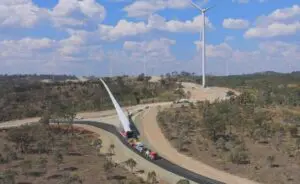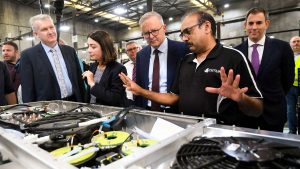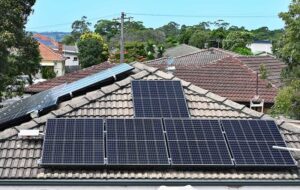Could we help power our cities using the ground beneath our feet? It’s a question UK company Pavegen has been working to answer for the past five years.
Pavegen’s technology – rubber-coated tiles that can be retrofitted to urban pavements and pedestrian crossings, or installed at events like the All Energy Australia conference in Melbourne this week – converts the kinetic energy of footsteps into electricity to power things like street lighting, or advertising, and feed back into grid.
Since its beginnings in London in 2009, Pavegen has installed and tested its product at schools in the UK, the London Metro, on the Champs Elysees for the Paris marathon, and at a festival in Singapore – all with encouraging results.
Each tile each tile can generate 7 watts of energy every time a person stands on it. But according to Pavegen CEO and inventor, Laurance Kemball-Cook, the technology still has a long way to go.
The tiles would need to be thinner – the aim is to get them down to 2cm – more efficient, and cheaper – the goal is the same price as regular flooring.
But Kemball-Cook’s ultimate goal is to make his technology Pavegen technology a key part of the new energy future, which, he told the All Energy Australia conference on Wednesday, would be all about decentralised, renewable energy.
“We’ve got to shift out of fossil fuels,” Kemball-Cook said, lamenting the fact that so much of the developed world was still wedded to the idea of building huge power stations, far away from the population centres they powered.
In Australia, he noted, 15,000GWh of power a year is lost in transmission alone – the equivalent to 4 million years of continuously charging an iPhone.
This could be saved using decentralised, distributed energy – to say nothing of the massive savings in efficiency that could be made if grids just got smarter.
“Smart grids are vital for everything,” said Kemball-Cook. But to make our grids smarter would mean tapping Big Data.
“Big Data is like underaged sex,” said Kemball-Cook. “Everyone is talking about it, but nobody’s doing it. But because everyone’s talking about it, we think everyone else is doing it.”
And of course, for distributed energy, storage is also key.
“Storage is the answer,” Kemball-Cook said. “But no one has cracked it yet.”
And part of the reason for this, he said, was the lack of support, and consistency, from governments.
“We need government support,” Kemball-Cook said. “And we need longevity of policy.”
Meanwhile, Pavegen continues to do its thing, with an installation of four tiles at the All Energy conference generating power from the footsteps of like-minded renewables industry folk.
The company is also monitoring the success of its largest installation to date – 200 tiles at a local football pitch redeveloped in conjunction with Shell in Morro da Mineira, a Brazil favela which has missed out on the benefits of tourism, or of events like the World Cup.
In Morro da Mineiram the Pavegen tiles work day and night alongside solar panels to power the lights for up to 10 hours on a full battery, creating the world’s first ever people-powered football pitch, officially opened on September 10 by local and international football legend Pelé.










